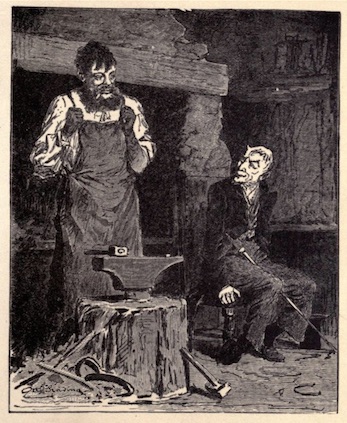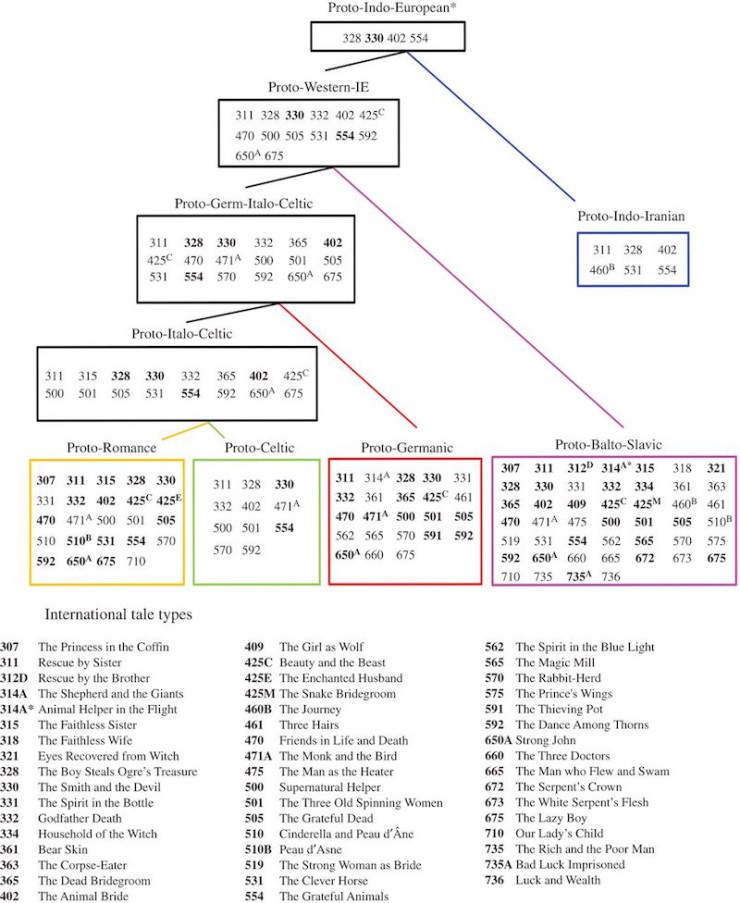While we know that the same fairy tales have shifted form and crossed over different cultures throughout history, linguists and anthropologists also assumed that they originated shortly before the time in which they were first written down. However, a pair of researchers have released a paper in which they used biological methods to trace fairy tales’ origins back not just hundreds, but thousands, of years. One in particular, “The Smith and the Devil,” may have come from as far back as the Bronze Age.
Social scientist/folklorist Sara Graça da Silva (from New University of Lisbon) and anthropologist Jamshid Tehrani (Durham University) created a phylogenetic tree, like the kind used in biology to trace evolution of species, to instead trace back the origins of popular fairy tales. (These methods have also been used in recent analyses of various cultural practices from marriage to music.) Starting with a list of 275 tales (all rooted in magic, it’s interesting to note), they narrowed it down to 76 stories, from which they then drew linguistic trees rooted in Indo-European languages. Analysis revealed that some of the stories were based on Indo-European languages that had since gone extinct, and/or certain stories (for example, “Jack and the Beanstalk”) had their roots in older tales. By looking back to the point where Western and Eastern Indo-European languages split, the researchers found themselves tracing back some of these stories to a point in history 5,000 years ago. As Phys.org points out, that means some of these tales predate certain Greek myths and the Bible.
Based on analysis of these 76 stories, da Silva and Tehrani reconstructed ancestral Indo-European tales to show the progression of certain tales. You might recognize ATU 425C “Beauty and the Beast” and ATU 500 “The Name of the Supernatural Helper” (which later became “Rumpelstiltskin”). While many folklorists had believed that these two tales were written down in the seventeenth or eighteenth centuries, these findings make the case that these stories existed in the oral tradition as far back as 2,500-6,000 years ago:
The bolded stories represent the situations “where tales could be securely reconstructed” (70% or more). In that case, let’s look at ATU 330, “The Smith and the Devil,” which seems to have originated in the Bronze Age about 6,000 years ago. The story is pretty straightforward: A blacksmith makes a pact with the devil (or Death, or a jinn, or another supernatural being), selling his soul in exchange for the power to weld any objects together. The blacksmith then uses his newfound power to weld the devil to a surface, forcing him to renege the soul part of the deal.
The Brothers Grimm collected “The Smith and the Devil” in their Children’s and Household Tales (published in 1812 and 1815), which is ironic, because Wilhelm Grimm was a proponent of this same theory of oral tradition. At the time, his beliefs that the stories he and his brother Jacob compiled were actually thousands of years old was shot down, but now he gets some vindication. You can read the entire paper in Royal Society Open Science.











